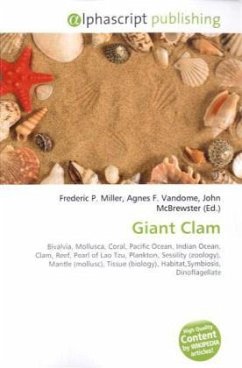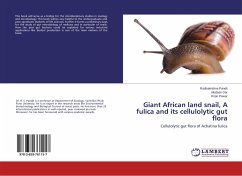
Giant Clam
Versandkostenfrei!
Versandfertig in 6-10 Tagen
30,99 €
inkl. MwSt.

PAYBACK Punkte
15 °P sammeln!
The giant clam, Tridacna gigas, or traditionally, pa ua, is the largest living bivalve mollusk. Tridacna gigas is one of the most endangered species amongst the clams. It was mentioned as early as 1825 in scientific reports.Giant Clam One of a number of large clam species native to the shallow coral reefs of the South Pacific and Indian oceans, they can weigh more than 200 kilograms (440 pounds), measure as much as 1.2 metres (4 feet) across, and have an average lifespan in the wild of 100 years or more. They are also found off the shores of the Philippines, where they are called taklobo. T. g...
The giant clam, Tridacna gigas, or traditionally, pa ua, is the largest living bivalve mollusk. Tridacna gigas is one of the most endangered species amongst the clams. It was mentioned as early as 1825 in scientific reports.Giant Clam One of a number of large clam species native to the shallow coral reefs of the South Pacific and Indian oceans, they can weigh more than 200 kilograms (440 pounds), measure as much as 1.2 metres (4 feet) across, and have an average lifespan in the wild of 100 years or more. They are also found off the shores of the Philippines, where they are called taklobo. T. gigas lives in flat coral sand or broken coral and can be found at depth of as much as 20 meters. Its range covers the entire Indo-Pacific, but populations are diminishing quickly and the giant clam has become extinct in many areas where it was once common. T. maxima has the largest geographical distribution of the giant clam species; it can be found in high- or low-islands, lagoons, or fringing reefs. The giant clam's growth rate is likely due to its ability to cultivate plants in its body tissue.












